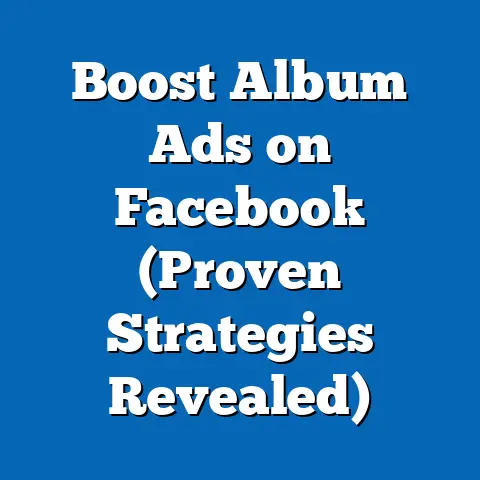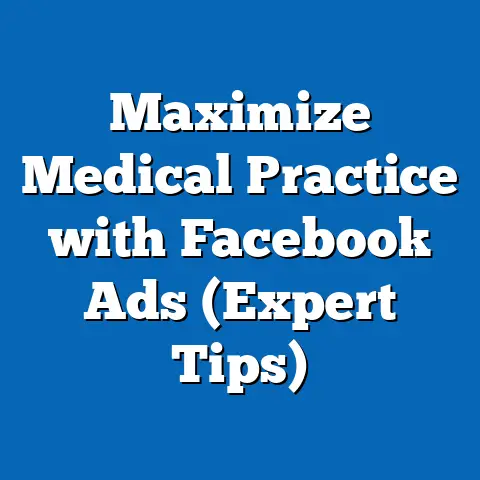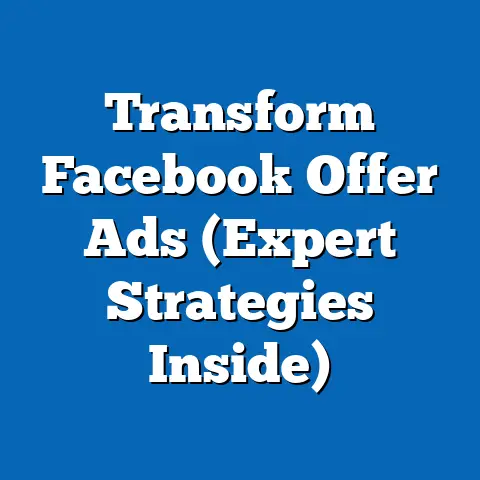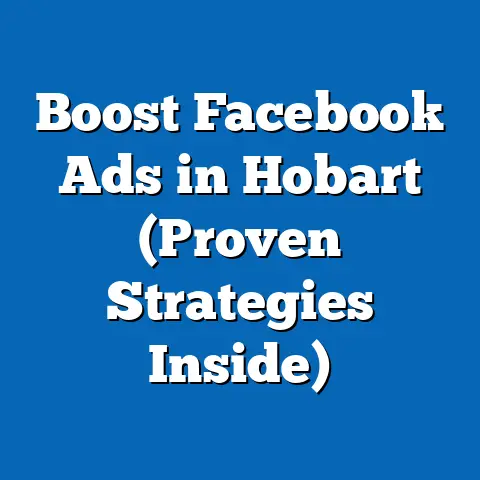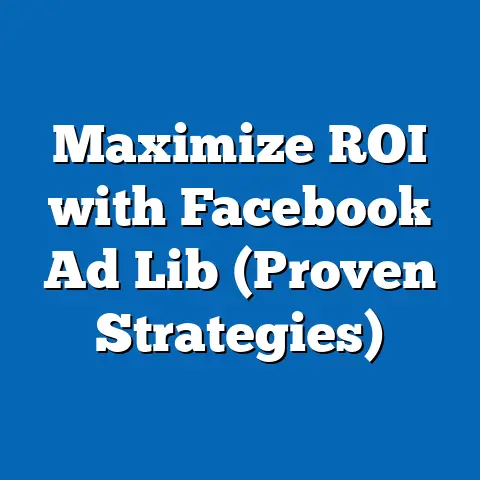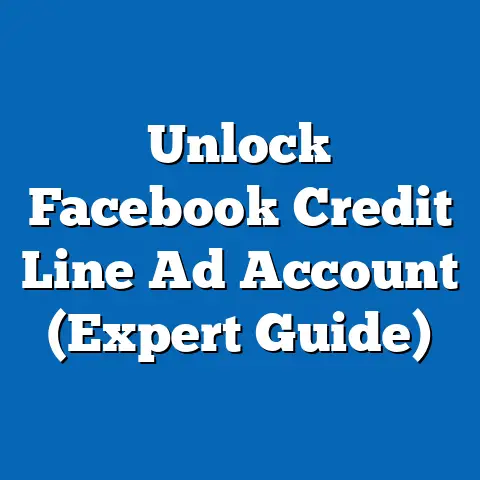Unlocking Facebook Ad Costs: What You Must Know (Expert Insights)
“Why are my Facebook ad costs so high?” This is a question I hear constantly, and it’s a valid concern. I’ve seen firsthand the frustration etched on the faces of marketers and business owners alike, as they grapple with the ever-changing landscape of Facebook advertising. The promise of reaching millions is alluring, but the reality of rising ad costs, opaque pricing structures, and the constant pressure to demonstrate a positive ROI can be overwhelming.
Believe me, I understand. I’ve been there, staring at the Ads Manager, trying to decipher why my budget was disappearing faster than a free pizza at a tech conference. One time, I was managing a campaign for a local bakery, and despite meticulous targeting, the cost-per-click kept climbing. It felt like I was throwing money into a black hole!
But here’s the good news: understanding how Facebook ad costs really work is the key to unlocking the platform’s immense potential. It’s about moving beyond the superficial and diving deep into the auction system, bidding strategies, and the myriad of factors that influence your ad spend. This isn’t just about saving money; it’s about making smarter decisions and achieving a truly positive ROI. In this article, I’ll share expert insights and actionable strategies to help you navigate the complex world of Facebook ad costs and transform your advertising efforts.
Section 1: The Basics of Facebook Ad Costs
Let’s start with the fundamentals. Facebook ad pricing isn’t a fixed rate; it operates on an auction system. This means you’re essentially bidding against other advertisers to show your ads to a specific audience. The higher your bid, the better your chances of winning the auction and having your ad displayed.
However, it’s not just about the bid amount. Facebook also considers other factors, such as:
- Ad Relevance Score: How relevant is your ad to the target audience? The more relevant, the lower your costs.
- Estimated Action Rates: How likely is your ad to achieve the desired action (e.g., click, purchase)?
- Ad Quality: How engaging and well-designed is your ad?
These factors contribute to your ad’s overall value in the auction, influencing your bid price.
Different Pricing Models:
Facebook offers several pricing models, each with its own advantages and disadvantages:
- Cost-Per-Click (CPC): You pay each time someone clicks on your ad. This is ideal for driving traffic to your website or landing page. I’ve found CPC to be particularly effective when I’m focused on lead generation campaigns.
- Cost-Per-Impression (CPM): You pay for every 1,000 impressions (times your ad is shown). This is best for brand awareness campaigns where the goal is to reach a large audience. I remember using CPM for a client launching a new product; the sheer visibility helped them gain significant traction.
- Cost-Per-Action (CPA): You pay only when someone takes a specific action, such as making a purchase or filling out a form. This is the most targeted but often the most expensive option. CPA is my go-to when I’m aiming for conversions and have a clear understanding of my target audience.
Takeaway: Understanding the auction system and the available pricing models is the first step in controlling your Facebook ad costs. Choose the model that aligns with your campaign goals and be mindful of the factors that influence your bid price.
Section 2: Understanding the Facebook Ad Auction
Now, let’s dive deeper into the mechanics of the Facebook ad auction. This is where things get interesting, and understanding this process is crucial for optimizing your ad spend.
Think of the auction like a real-time bidding war. Every time a Facebook user is eligible to see an ad, an auction takes place. Facebook’s algorithm evaluates all the ads targeting that user and determines which ad to show based on its overall value.
As I mentioned earlier, the bid amount is just one piece of the puzzle. Facebook also considers the ad relevance score and estimated action rates.
- Ad Relevance Score: This score, ranging from 1 to 10, reflects how well your ad resonates with your target audience. Factors like positive feedback (likes, shares, comments) and negative feedback (hiding the ad, reporting it) influence this score. A high relevance score can significantly lower your ad costs. I once ran two identical ads, but one targeted a more specific, highly engaged audience. The ad with the higher relevance score cost significantly less!
- Estimated Action Rates: Facebook predicts how likely users are to take the desired action after seeing your ad. This prediction is based on historical data and user behavior. If Facebook believes your ad will generate a lot of clicks or conversions, it will reward you with a lower cost-per-action.
Expert Insight: “The key to winning the Facebook ad auction isn’t necessarily having the highest bid; it’s having the most relevant and engaging ad,” says digital marketing expert Neil Patel. This resonates with my own experience. I’ve seen campaigns with modest budgets outperform those with larger budgets simply because they were more targeted and relevant.
Leveraging Auction Insights:
Facebook provides valuable insights into the auction process through the “Auction Overlap” and “Competition” reports in Ads Manager. These reports can help you:
- Identify Overlapping Audiences: See which other advertisers are targeting the same audiences as you. This can help you refine your targeting and avoid bidding wars.
- Assess Competition: Understand how competitive your chosen audience is. If the competition is high, you may need to increase your bid or improve your ad quality to stand out.
Takeaway: Mastering the Facebook ad auction requires a deep understanding of the factors that influence your ad’s value. Focus on creating relevant, engaging ads and leverage auction insights to optimize your bidding strategy.
Section 3: Key Metrics for Evaluating Ad Costs
You can’t improve what you don’t measure. Monitoring the right metrics is essential for evaluating the effectiveness of your Facebook ads and identifying areas for improvement. Here are some key metrics to keep an eye on:
- Click-Through Rate (CTR): This is the percentage of people who click on your ad after seeing it. A high CTR indicates that your ad is relevant and engaging to your target audience. I aim for a CTR of at least 1% for most campaigns, but this can vary depending on the industry and ad type.
- Cost Per Click (CPC): This is the amount you pay each time someone clicks on your ad. A lower CPC means you’re getting more traffic for your budget. My target CPC depends on the campaign objective, but I generally strive for under $1.
- Return on Ad Spend (ROAS): This is the revenue you generate for every dollar you spend on advertising. ROAS is the ultimate measure of your campaign’s profitability. I consider a ROAS of 3x or higher to be a successful campaign.
A/B Testing and Performance Tracking:
A/B testing is the process of comparing two versions of an ad to see which performs better. This is a powerful tool for optimizing your ad creatives, targeting options, and bidding strategies.
I remember once A/B testing different headlines for a lead generation ad. The winning headline generated a 30% higher CTR and a 20% lower cost-per-lead!
Performance tracking involves monitoring your key metrics over time to identify trends and patterns. This can help you understand which campaigns are working and which aren’t, allowing you to make informed decisions about your ad spend.
Expert Opinion: “A/B testing is the foundation of successful Facebook advertising,” says digital marketing expert Amy Porterfield. “It allows you to continuously refine your campaigns and maximize your ROI.” I couldn’t agree more. I make it a habit to constantly test and iterate on my ads.
Setting Benchmarks:
It’s important to set realistic benchmarks for your key metrics based on your industry, target audience, and campaign goals. Research industry averages and track your own performance over time to establish a baseline.
Takeaway: Monitoring key metrics, conducting A/B tests, and tracking performance over time are essential for evaluating the effectiveness of your Facebook ads and optimizing your ad spend.
Section 4: Common Misunderstandings About Facebook Ad Costs
One of the biggest mistakes I see is the assumption that simply throwing more money at Facebook ads will automatically lead to better results. It’s tempting to think that a larger budget equals more visibility and conversions, but that’s not always the case.
Misconception #1: Higher Spend = Better Results:
While a larger budget can certainly increase your reach, it’s not a guaranteed path to success. If your ads are poorly targeted, irrelevant, or unengaging, you’ll simply be wasting money. I’ve seen campaigns with small budgets outperform those with significantly larger budgets because they were more strategically executed.
Misconception #2: Ad Spend is the Only Factor:
Ad spend is just one piece of the puzzle. Creative quality, audience targeting, and timing all play crucial roles in influencing ad performance and costs. A well-designed ad targeting the right audience at the right time can generate far better results than a generic ad with a large budget.
The Importance of Creative Quality:
Your ad creative (images, videos, and copy) is what grabs people’s attention and persuades them to take action. Investing in high-quality visuals and compelling copy is essential for driving engagement and conversions.
I once worked with a client who was struggling to generate leads with their Facebook ads. After revamping their ad creatives with professional photography and persuasive copy, their lead generation costs plummeted by 50%!
The Power of Audience Targeting:
Targeting the right audience is crucial for ensuring that your ads are seen by people who are likely to be interested in your product or service. Facebook offers a wide range of targeting options, including demographics, interests, behaviors, and custom audiences.
Real-Life Example:
I remember a local bookstore that was struggling to attract customers. After implementing a targeted Facebook ad campaign focused on readers of specific genres and authors, they saw a significant increase in foot traffic and sales.
Takeaway: Don’t fall into the trap of thinking that higher ad spend is the only solution. Focus on creating high-quality ads, targeting the right audience, and optimizing your campaigns for maximum impact.
Section 5: Expert Tips for Managing Facebook Ad Costs
Now, let’s get to the actionable part: expert tips for managing and optimizing your Facebook ad budgets effectively. These are strategies I’ve personally used and seen work time and time again.
- Focus on Retargeting: Retargeting involves showing ads to people who have previously interacted with your website or Facebook page. These users are already familiar with your brand and are more likely to convert. Retargeting campaigns often have significantly lower costs and higher conversion rates than prospecting campaigns.
- Leverage Lookalike Audiences: Lookalike audiences are created by identifying users who share similar characteristics to your existing customers or website visitors. This is a powerful way to expand your reach and target new potential customers.
- Optimize Ad Creatives: Continuously test and refine your ad creatives to improve their performance. Experiment with different images, videos, headlines, and copy to see what resonates best with your target audience.
- Monitor Frequency: Ad frequency refers to the number of times a user sees your ad. If your frequency is too high, people may become annoyed and start ignoring your ads. Keep a close eye on your frequency and adjust your targeting or ad creatives to avoid ad fatigue.
- Schedule Ads Strategically: Consider scheduling your ads to run during the times when your target audience is most active on Facebook. This can help you maximize your reach and engagement.
- Pay Attention to Seasonal Trends: Adjust your budgets and ad creatives based on seasonal trends and market fluctuations. For example, you may want to increase your ad spend during the holiday season or launch a special promotion during a major event.
Scaling Ad Campaigns:
Scaling your ad campaigns while maintaining cost efficiency requires a strategic approach. Here are some tips:
- Gradually Increase Budgets: Avoid making sudden, drastic changes to your ad budgets. Gradually increase your budgets over time to allow Facebook’s algorithm to adjust and optimize your campaigns.
- Expand Targeting Gradually: As you scale your campaigns, consider expanding your targeting options gradually. This can help you reach new audiences without sacrificing performance.
- Monitor Performance Closely: Continuously monitor your key metrics and make adjustments as needed to ensure that your campaigns remain profitable.
Takeaway: Managing Facebook ad costs effectively requires a proactive and strategic approach. Focus on retargeting, leveraging lookalike audiences, optimizing ad creatives, and scaling your campaigns gradually.
Conclusion
Understanding Facebook ad costs is no longer a luxury; it’s a necessity for any business looking to thrive in the digital age. As I’ve shown, it’s not just about blindly throwing money at the platform. It’s about understanding the auction system, mastering key metrics, avoiding common misconceptions, and implementing expert strategies.
The world of social media advertising is constantly evolving, so continuous learning and adaptation are crucial. Stay informed about the latest trends and best practices, and don’t be afraid to experiment and try new things.
By taking an informed and strategic approach to your Facebook ad strategies, you can unlock the platform’s immense potential and achieve a truly positive ROI.
Now, I’d love to hear from you! What are your biggest challenges with Facebook ad costs? Share your experiences or questions in the comments section below. Let’s learn from each other and navigate this complex landscape together!

